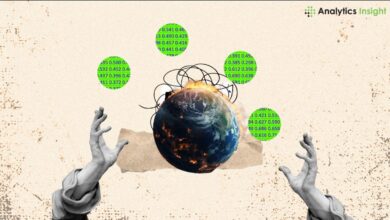Key to Superior Data Analytics Outcomes

Technological advancements in the current business environment attract organizations to look for ways to harness new technologies. Generative AI is a broad area that has shown the highest growth rate in the last few years.
The generative nature of AI is changing perceptions and perspectives of data analytics and its utilization. As simple as giving a set of directions, anyone would respond with text, an image, audio, or whichever format you want it in.
Generative AI technology
This is a subfield of artificial Intelligence that employs learning to produce innovative types of content, such as images, text, video, or music. It works on large datasets and develops the necessary structures and shadings to mimic the original data.
The simplicity of these interfaces mainly fuels the great hype about GenAI. You can write text in natural language and get high-quality text and images within seconds. It is also fixed on how it categorically departs from other models in terms of its governing principle.
Generative Adversarial Networks (GANs)
It is important to note for scholars that this technology is not the latest in the market. Gen AI was first used in the 60s to generate messages within chatbots. Moreover, generative AI advanced in 2014 and was likely to transform into what is being seen today. One of the critically acclaimed methods in Gen AI is the Generative Adversarial Network (GAN), which was first proposed by Ian Goodfellow et al.
GANs are a type of machine learning algorithm that involves framing a problem as a supervised learning problem with two sub-models.
The AI model is trained to create a new set of data points belonging to a particular domain. In contrast, the classifier model, known as the discriminator, identifies the new set of data points as either real or fake. In this kind of repetitive training, the generator takes the chance of generating closer-to-reality examples, while the discriminator becomes wiser in determining fake and real samples.
Variational Autoencoders (VAEs)
Another popular approach in generative modeling is a Variational Autoencoder VAE. It was proposed by Diederik P. Kingma and Max Welling in 2013, when the authors worked at Google and Qualcomm, respectively; VAE differs from simple autoencoders by using the encoder-decoder structure.
The encoder subdues the raw data into a probability distribution with fewer parameters, and the decoder network reconstructs it back into the actual data space. This method is also convenient for constructing artificial human faces or data for training artificial intelligence systems.
Transformer Architecture (Deep learning)
There are many more generative AI models, including recurrent neural networks (RNNs), diffusion models, foundational models, transformer models, and others.
Google researchers introduced self-supervised transformer-style learning, which has also been employed in the development of LLMs that work in Google BERT, OpenAI’s ChatGPT, and Google AlphaFold.
Mainly, this disrupts generative AI and data analytics when making predictions or developing models for assessing populism.
Just like in any other industry, Generative AI has heavily impacted and revolutionized the data analytics industry. It is pivotal and versatile in assessing and displaying information. From data cleaning and processing to visualization, generative AI gives new entry points to the effective analysis of large and complex data sets.
Generative AI for Data Analytics
Generative AI has now brought about a paradigm shift in the data analysis industry. It has an essential and diverse function in the cognitive and analytical systems when handling and interpreting various data. Data cleaning, data preparation, data transformation, data interpretation, and data visualization are some of the areas where the traditional approaches of artificial intelligence were not enough. Now, the generation of AI has provided new possibilities for getting insights from bigger and more complicated data.
Let’s take a look at some of the key roles Generative AI explores in the realm of data analytics:
Improved data preprocessing and augmentation
The data mining cycle includes many phases, including data pre-processing, to get data in an understandable and usable format. This process has several phases, including data cleaning, transformation, reduction, and normalization, thus proving to be challenging.
Generating data for training models
Adversarial AI can generate completely fake data, while generative AI technology can produce fake data that is, in most cases, similar to the original data source. This should be used where the available data is scarce or restricted by privacy protocols.
The synthetic data generated can be used as a source for training and developing ML models without reliance on sharing sensitive data. This keeps users’ data safe and enables large enterprises to use larger datasets for training, which leads to better models.
Automate analytics tasks
Most of the activities within business intelligence and data analytics may require repetitive investments of time and effort. Menu commands can automate the job, but coding involves time and effort. Using Generative AI can help you to develop as many upgrade drafts as you want.
Enhanced data visualization
Data visualization is an important aspect of data analytics because it helps present data. This approach helps engage stakeholders and improves the chances of making the right decision by creating beautiful charts, graphs, and even dashboards.



